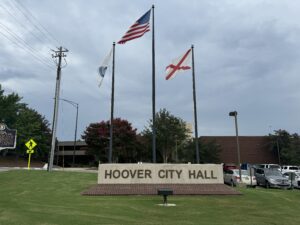Alabama reopening red snapper season September 29
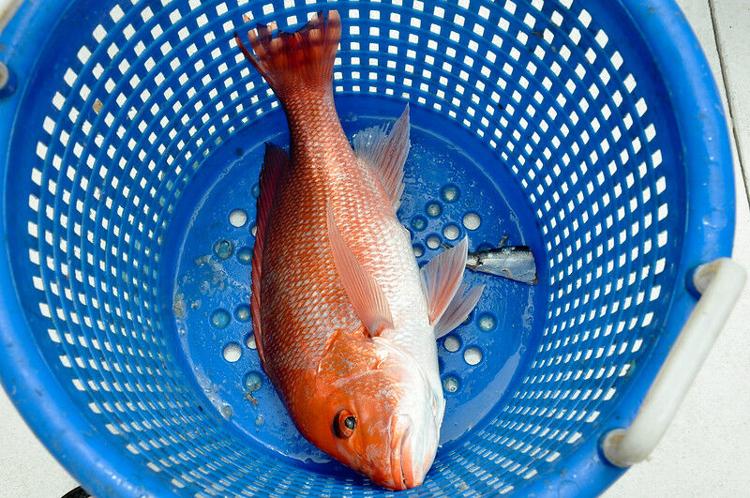
The Marine Resources Division (MRD) of the Alabama Department of Conservation and Natural Resources (ADCNR) announced that the 2023 private angler red snapper fishing season will reopen at 12:01 a.m. on Friday, September 29, for a four-day weekend. These four-day weekends will continue until the remaining federal quota is met. The 2023 red snapper season initially closed on September 4. MRD reviewed the landing data and found that the state still has 15,671 pounds of fish to catch until the state will max out its 2023 federal allocation of 591,185 pounds of red snapper. Scott Bannon is the Director of the MRD. “At the end of each season, we make a thorough review of the landing reports and our surveys and calculations to ensure we have an accurate accounting of how much red snapper has been landed in Alabama,” said Director Bannon. “These quality control measures have identified the remaining available amount of our red snapper quota. We are reopening the season to provide full access to this important fishery and to make sure we are managing it responsibly.” ADCNR Commissioner Chris Blankenship claims that reef fish management at the state level is the most efficient and effective way to ensure the sustainability of the fishery and provide access to quality outdoor recreation for anglers. “Under state management, we are able to respond very quickly to the data and provide maximum access to red snapper for our anglers,” Commissioner Blankenship said. “Under the federal system, a closure date would be estimated, and then it would take several months, at a minimum, to determine how many fish were caught. We are able to make that determination in days. ADCNR will continue working to ensure our citizens and visitors have access to the incredible red snapper fishery off the coast of Alabama.” Red snapper management and the number of fish that live in the Gulf of Mexico has been a point of contention between the state and the National Oceanic and Atmospheric Administration (NOAA) Fisheries Division. Anglers are reminded that the daily bag limit is two red snappers per person per day, with a minimum size limit of 16 inches in total length. To take any fish beyond the two-fish limit or any red snapper smaller than 16 inches is strictly illegal. NOAA reminds fishermen to put fish back in the water correctly to minimize any injuries they might receive during catch and release. To lawfully fish for red snapper – or any other saltwater fish – you must have a valid Alabama Saltwater Fishing License. License requirements, harvest requirements, reporting, and daily bag limits still apply during jubilees. To connect with the author of this story or to comment, email brandonmreporter@gmail.com.
Red snapper season closes on September 4
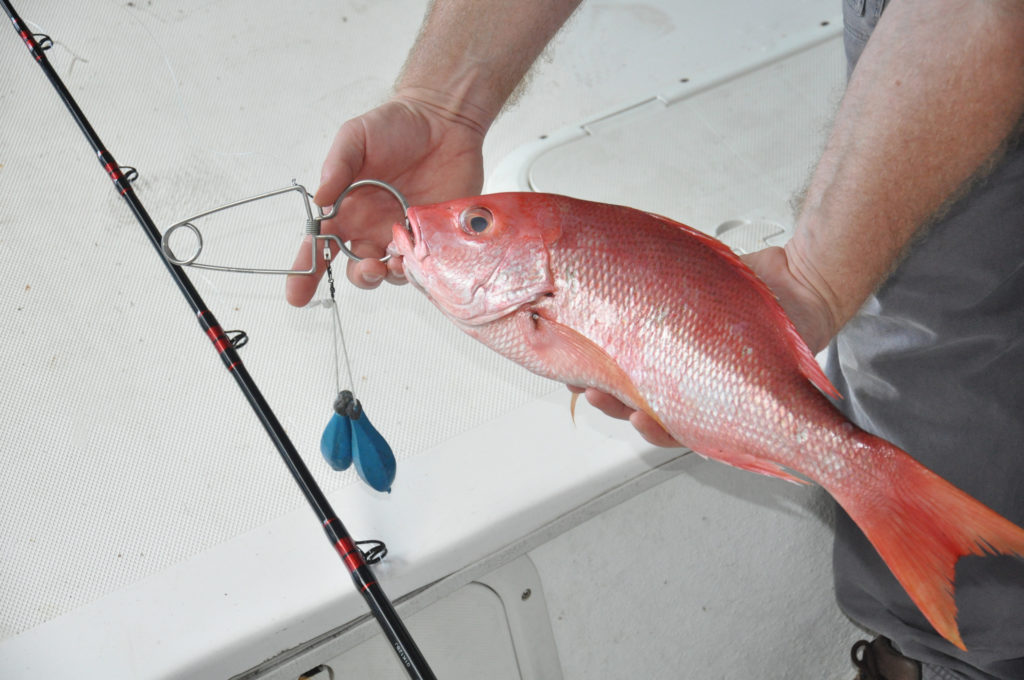
If you plan on fishing for red snapper this year, you have just ten days left. The Marine Resources Division (MRD) of the Alabama Department of Conservation and Natural Resources (ADCNR) announced on Friday that the 2023 private angler red snapper fishing season will close at 11:59 p.m. on Monday, September 4. The federal government is limiting Alabama to 591,185 pounds of Red Snapper in 2023. It is anticipated that that quota will be caught by the time of the announced season-end date. Scott Bannon is the Director of the MRD. “Weather is generally the primary factor in the duration of the red snapper season in Alabama,” said Director Bannon. “Other than multiple days of excessive heat, the weather was very favorable for offshore fishing this year. Having a red snapper season that runs from Memorial Day weekend through Labor Day weekend is much better than the 3, 7, and 9-day seasons we had prior to states having the opportunity to manage their quotas. We thank anglers for continuing to report their red snapper, greater amberjack, and triggerfish catches through Snapper Check. It’s an important tool that helps provide increased access to these fisheries.” MRD anticipates that Alabama will be granted an increase to the Alabama quota for the 2024 season based on a rule to be approved by the U.S. Secretary of Commerce in late 2023. Chris Blankenship is the ADCNR Commissioner. “It has been a good, long red snapper season in Alabama this year,” said Commissioner Blankenship. “Under state management, we were able to have red snapper season open during the prime months for offshore fishing. It was exciting to see anglers steadily reeling in red snapper throughout the summer. ADCNR will continue working to ensure our citizens and visitors have access to the incredible red snapper fishery off the coast of Alabama.” Alabama did not reach the quota in 2022. According to Red Snapper landing information from the 2021-2023 seasons, the state is very close to the federal quota. Red snapper management and the number of fish that live in the Gulf of Mexico has been a point of contention between the state and the National Oceanic and Atmospheric Administration (NOAA) Fisheries Division. Anglers are reminded that the daily bag limit is two red snapper per person per day, with a minimum size limit of 16 inches in total length. To take any fish beyond the two-fish limit or any red snapper smaller than 16 inches is strictly illegal. To lawfully fish for red snapper – or any other saltwater fish – you must have a valid Alabama Saltwater Fishing License. License requirements, harvest requirements, reporting, and daily bag limits still apply during jubilees. To connect with the author of this story or to comment, email brandonmreporter@gmail.com.
Red snapper season continues through July 4

On Thursday, the Marine Resources Division (MRD) of the Alabama Department of Conservation and Natural Resources (ADCNR) reminded Alabamians that state waters and federal waters will be open to private and state-licensed charter vessel anglers for red snapper harvest on Tuesday, July 4, 2023. Scott Bannon is the Director of the Marine Resources Division. “The Fourth of July is traditionally a day when families spend time together on the water,” said MRD Director. “We are thankful to be in a position to provide the opportunity for people to catch red snapper this Independence Day. A closing date for the season will be announced when the 2023 quota is anticipated to be met. Anglers are encouraged to continue reporting their harvest through Snapper Check and participate in the dockside surveys conducted by MRD staff. Accurate reporting helps us best manage Alabama’s red snapper season.” Every fisherman is required to report any red snapper to ADCNR through the Snapper Check system. This includes shore, private vessels, and state charter angler landings. Red snapper landings updates are posted weekly during the season on ADCNR’s Red snapper page. As of June 26, 2023, anglers have already harvested 361,314 pounds of the state’s 2023 federal quota of 591,185 pounds. Fishermen have less than 130,000 pounds to harvest before government authorities will have to shut red snapper fishing down for the remainder of the year. Alabama anglers have harvested 130,000 pounds of red snapper in just the last 17 days – well ahead of last year’s pace, where the quota was never reached. If this is a big fishing week, red snapper harvesting could likely be shut down before the middle of July. The Alabama private angler quota for 2023 was set by the Biden Administration’s National Oceanic and Atmospheric Administration (NOAA) Fisheries division. The dramatically lower red snapper quota is a result of changes concerning the difference between state and federal harvest landing systems. The Marine Resources Division hopes that there will be an increase to Alabama’s 2024 red snapper quota due to an increase in the annual catch limit for Gulf red snapper that is currently in the rulemaking process at NOAA Fisheries. Chris Blankenship is the Commissioner of ADCNR. “Even with the changes to Alabama’s quota this year, we are having a great red snapper season,” said Commissioner Blankenship. “Adding the Fourth of July holiday for red snapper fishing will be good for families and friends celebrating our freedoms on the water that day in coastal Alabama.” Anglers are reminded that the daily bag limit is two red snapper per person, per day, with a minimum size limit of 16 inches in total length. To take any fish beyond the two-fish limit or any red snapper smaller than 16 inches is strictly illegal. To lawfully fish for red snapper – or any other saltwater fish – you must have a valid Alabama Saltwater Fishing License. Anglers have numerous fish that they may legally harvest in state and federal waters if the red snapper limit is reached. NOAA is holding a meeting of the Gulf of Mexico Fishery Management Council on August 14 – 17 in Austin, Texas. The Council will be in Gulf State Park in Gulf Shores, Alabama, on April 8 – 11. To connect with the author of this story or to comment, email brandonmreporter@gmail.com.
Over $1 billion spent on Deepwater Horizon settlement projects in Alabama
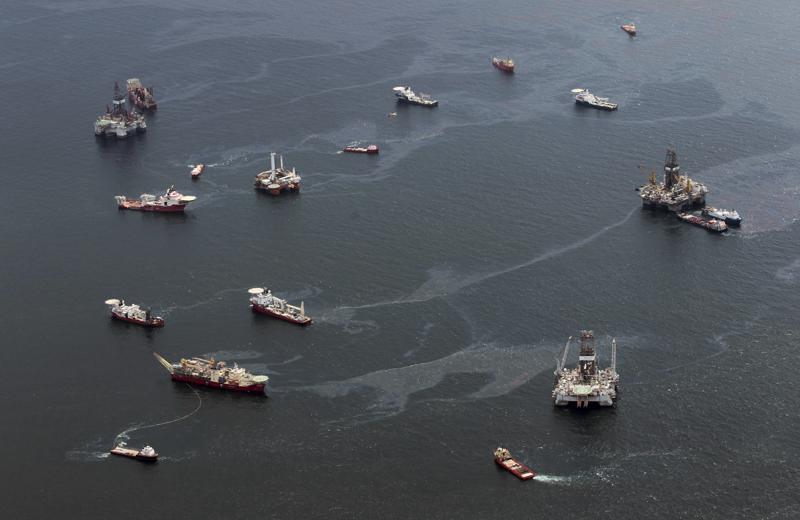
On Friday, David Rainer with the Alabama Department of Conservation and Natural Resources reported that the Deepwater Horizon settlement has paid for over $1 billion of projects in the state. Alabama Department of Conservation and Natural Resources (ADCNR) Commissioner Chris Blankenship spoke at last weekend’s Conservation Advisory Board meeting in Huntsville to update the Board on the numerous projects in the state under ADCNR oversight. “The big takeaway is we have $1 billion, $29 million in projects underway in Mobile and Baldwin counties that we are managing through our Deepwater Horizon Section,” Commissioner Blankenship said. “That is 176 individual projects. That’s a lot of money and a lot of work going on. We have six people in that section, and they’re doing a very good job of managing projects that will make generational changes on the Gulf Coast.” Blankenship said that ADCNR’s Deepwater Horizon Restoration Coordinator, Amy Hunter, and her staff oversee the projects funded by the settlement. “We never want to go through another Deepwater Horizon event, where 11 lives were lost,” Blankenship said. “It was a terrible, terrible event for our coast. However, we’re trying to do good work with the money that came from that settlement.” Among those projects are ones to replenish and protect Alabama’s living coastal and marine resources. “That includes restoration of oysters and oyster reefs,” Blankenship said. “We’re building about $30 million in artificial reefs. We’re increasing funding for research for stranding response for marine mammals and sea turtles, conservation of bird nesting and foraging habitat, as well as construction of a wildlife rehabilitation center and sea turtle triage facility in Orange Beach.” Another funding goal is to support and enhance community resilience during environmental or economic crises. The $65 million in projects includes constructing the Auburn University Gulf Coast Engineering and Research Center in Orange Beach to improve engineering in the coastal environment. The projects include a new Alabama Department of Environmental Management (ADEM) office that is under construction on the coast. The Alabama Seafood Commission is funded, as well as Fairhope’s Working Waterfront and Green Space initiative. “Resilience is important for all of our state but particularly our coastal areas,” Blankenship said. “We’re working to make us more resilient during storms or drought or economic downturns, things that make our communities stronger when we have negative impacts in our state. As an aside, Governor [Kay] Ivey, by executive order, created a resilience council just a few weeks ago, and the Commissioner of the Department of Conservation is one of the members.” Funding will also be used to provide and enhance economic development and infrastructure. Eleven projects, totaling $197.5 million, include the construction of the Africatown Welcome Center, which will house a portion of the Clotilda. The Clotilda, discovered in the Mobile-Tensaw Delta, was the last slave ship to transport slaves from Africa to the United States. Another project that received funding was the construction of a roll-on, roll-off facility that will facilitate the export of cars and trucks that are built in Alabama. Road improvements in Baldwin County are also included in this funding. There is evidence that the Deepwater Horizon oil spill has had a long-term impact on the stability of the marshy shores of the Gulf of Mexico. A recent scientific paper presented findings that the oil has impacted marsh grass has led to the soil continuing to crumble away at a faster rate than before the spill, causing the shoreline to retreat more rapidly than it would otherwise. About $401 million is being used to restore, conserve and enhance habitat in coastal Alabama. “This is primarily land acquisition,” Commissioner Blankenship said. “So far, we have acquired more than 13,000 acres of land in coastal Alabama to protect and provide recreational access. That includes the west end of Dauphin Island, Grand Bay Savanna, Pilot Town on Fort Morgan, Gulf Highlands property on Fort Morgan, which is one of the last undeveloped areas of the beach that was not part of Fort Morgan or the Bon Secour National Wildlife Refuge. It also includes multiple parcels in Weeks Bay, parcels at Dauphin Island, Oyster Bay, and we have purchased three parcels in the Three Rivers area that we have transferred to the Bon Secour National Wildlife Refuge.” Land acquisition includes tracts along the Perdido River watershed to provide a wildlife corridor from the Perdido River Wildlife Management Area to the Lillian Swamp Forever Wild property. “We have been working for the past six years to connect those wildlife management areas,” Commissioner Blankenship said. “It will be a distinct wildlife corridor with about 50 miles of river frontage. The Deepwater Horizon exploded on April 2010, leading to the release of 200 million gallons of oil being released into the Gulf of Mexico. “When that work is done, we will have well over 30,000 acres along the Perdido River for public access, hunting, hiking, canoe trails, and river frontage from near the headwaters all the way to Perdido Bay in public ownership,” Blankenship said. “We have used more than eight different funding sources to acquire this property. This shows how working together with our divisions and the Deepwater Horizon Section has been really successful at putting all this together for the people of Alabama for perpetuity.” Another $159 million is committed to improving water quality in coastal Alabama through sewer and septic tank mitigation. “We are working with the utilities to avoid sanitary sewer overflows to improve water quality,” Commissioner Blankenship said. “Using Deepwater Horizon and GOMESA (Gulf of Mexico Energy Security Act) funding, we have done several septic to sewer conversions in the coastal areas, like Fowl River, Grand Bay, and Bayou La Batre, that are really close to the water.” The effort to provide and enhance recreation and public access will receive $147 million in funding. “During the oil spill, it wasn’t just the environment that was impacted. It was also the people,” Commissioner Blankenship said. “We lost recreational access to the beaches, fishing, and a lot of other activities. As part of the Natural Resource Damage Assessment (NRDA),
Tommy Tuberville expresses concerns about new federal red snapper limits

The new U.S. Department of Commerce regulation on red snapper harvest is expected to cut the amount of fish that Alabama’s red snapper fishermen are allowed to harvest during Alabama’s red snapper season. U.S. Senator Tommy Tuberville expressed his concerns about the new regulation on Monday. The Department of Commerce’s new rule requires the National Marine Fisheries Service to convert all fisheries into a single federal system. Tuberville said that this will have negative implications for Alabama’s red snapper industry. “Once again, the Biden administration is trying to force its one-size-fits-all approach and ignore the adverse effects of its decisions,” said Senator Tuberville. “Red snapper fishing is a huge part of Alabama’s Gulf Coast economy, which is why I’ll continue pushing back against the Department of Commerce’s disastrous proposal to decrease limits for red snapper anglers based on inaccurate data.” Last August, Tuberville joined his congressional colleagues in urging Commerce Secretary Gina Raimondo to reverse the department’s proposed rule to undo the National Marine Fisheries Service’s standard of setting quotas and annual catch data on a state-by-state basis. Instead, the department proceeded with its rule to implement a standardized catch limit in all states, even Alabama, with fishery programs certified by the National Marine Fisheries Service. This rule is expected to severely cut Alabama’s red snapper catch limits for 2023 by 51 percent, according to the Alabama Department of Conservation and Natural Resources (ADCNR). In 2021, the Gulf of Mexico Fishery Management Council decided to delay the calibration of red snapper allocation until January 2023 and approve a moderate increase in the 2021 annual catch limit rejecting the National Oceanic and Atmospheric Administration’s (NOAA) attempts to cut Alabama’s red snapper season in half. Under a final rule published by NOAA Fisheries on December 1, Alabama’s private recreational anglers will see a 51% decrease in the 2023 red snapper quota. The rule went into effect on January 1, reducing Alabama’s private recreational quota from 1,122,662 pounds in 2022 to just 558,200 pounds in 2023. Critics of the new federal regulation claim that there are three times as many red snapper in the Gulf than previously estimated. Scott Bannon is the Commissioner of the Alabama Department of Conservation and Natural Resources “Each Gulf state is accounting for their recreational harvests using different data programs from what the federal government is using,” Bannon stated. “Under the other final rule that created state management of red snapper in 2018, there was a requirement to align the landings into the same currency through a calibration method. Alabama and Mississippi have very accurate reporting systems, and we feel the harvest estimates from NOAA are inflated and unreasonable. “Since before state management of red snapper was initiated, we have pushed the Gulf of Mexico Fishery Management Council (Gulf Council) that we should manage the amount of fish off each state. From Alabama’s perspective, this is in part due to the investments made by the state and private individuals in artificial reef building from which a significant number of red snapper and other reef species are produced in Alabama’s reef zones.” Bannon points to Alabama’s investments in creating artificial reefs to provide habitat for the snapper and other reef fish as one reason Alabama’s quota should be higher. Federal regulation of the red snapper season has been a point of contention with state officials for years. Federal authorities are essentially ignoring years of data that state wildlife managers have collected on red snapper numbers. The new rules mean that red snapper fishermen will be able to spend fewer days on the water pursuing the fish this year and that while doing so, they will be allowed to keep fewer fish. Fishermen who customarily fill their freezers with red snapper for their family’s protein needs will have to pursue a different fish species this year and be prepared for this dramatic change in their fishing habits and strategy. Alabama Today will continue to follow this story and have more details when the 2023 red snapper season rules are finalized. Tommy Tuberville has represented Alabama in the United States Senate since 2021. Tuberville unseated incumbent Sen. Doug Jones in the 2020 election. To connect with the author of this story or to comment, email brandonmreporter@gmail.com.
Red Snapper season to end on December 31
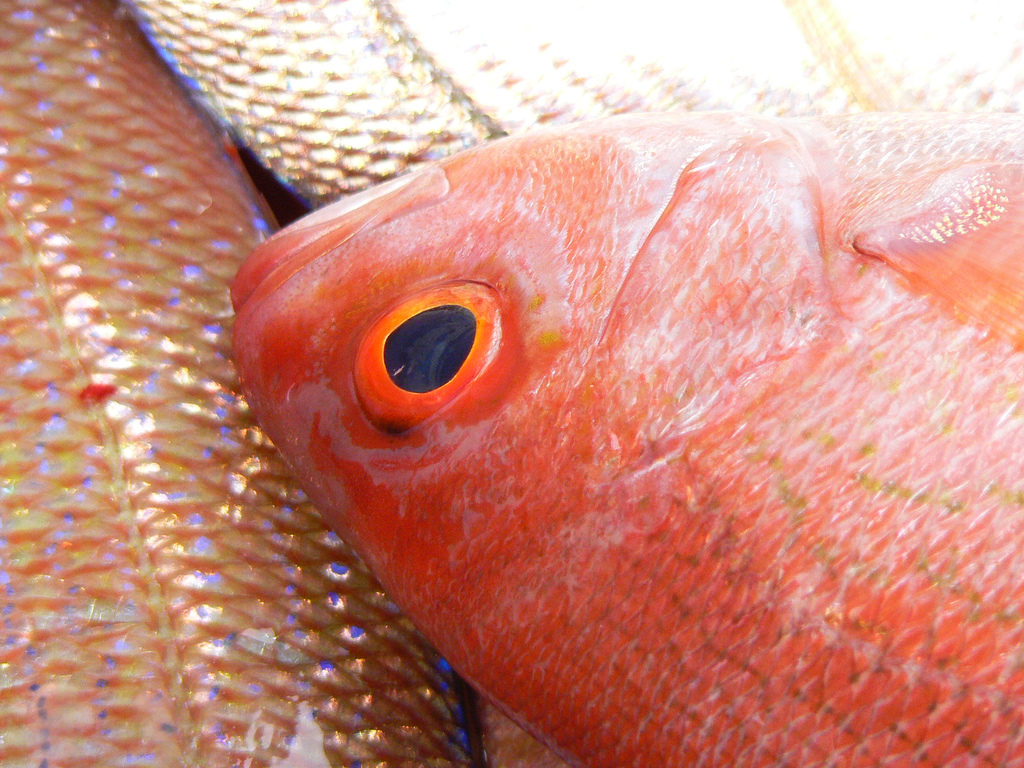
On Wednesday, the Alabama Department of Conservation and Natural Resources (ADCNR) Marine Resources Division (MRD) announced that Alabama’s Red Snapper private angler season will close at midnight on December 31. MRD reports that Alabama anglers caught far fewer fish than the federal government allocates to Alabama fishermen. Alabama’s 2022 federal allocation of red snapper was 1.12 million pounds. Anglers have to this point, actually harvested less than 500,000 pounds during the 128-day season. “Every year, a variety of factors impact the effort in this fishery,” said Scott Bannon, MRD Director. “Those factors influence the number of days Alabama is open to fishing for red snapper. Good weather throughout the summer and fall provided anglers with more opportunities to participate this year. We also want to thank anglers for reporting their red snapper harvests through Snapper Check. It is an important tool in providing increased access to this fishery.” The size of the state’s red snapper allocation and the length of the season has been a point of contention between the state and federal regulators with the National Oceanic and Atmospheric Administration (NOAA) for years. MRD says that it will announce the 2023 season dates in the coming months once NOAA Fisheries finalize the 2023 quota. “It has been a good, long red snapper season in Alabama this year,” said Chris Blankenship, ADCNR Commissioner. “Under Alabama state management, we were able to provide maximum access in 2022. This is the sixth successful red snapper season under state management. It was good to see anglers reeling in red snapper throughout the summer and fall. ADCNR will continue fighting to ensure our citizens and visitors have access to the incredible red snapper fishery off the coast of Alabama.” NOAA has announced that private angler red snapper catch limits for red snapper will increase in 2023 as the numbers of red snapper have increased in the federal government’s most recent assessments. MRD has also announced that the state will close all Alabama waters to oyster harvesting on Friday at 2:00 p.m. To connect with the author of this story, or to comment, email brandonmreporter@gmail.com.
State closes all waters to oyster harvesting on Friday
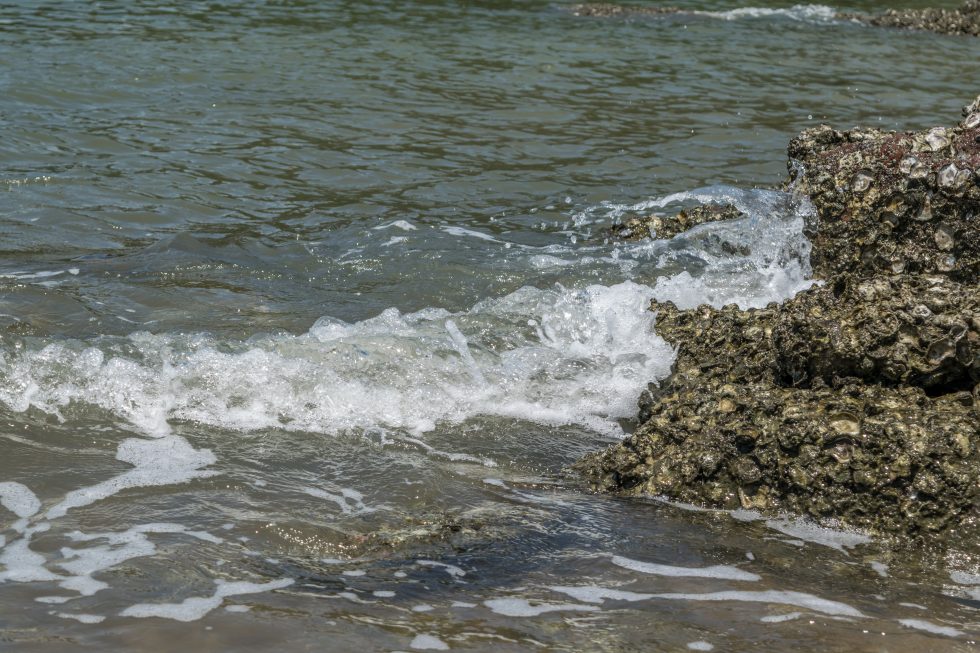
The Alabama Department of Conservation and Natural Resources (ADCNR) Marine Resources Division (MRD) announced on Monday that all public water bottoms will close to the harvest of oysters at 2 p.m. on Friday, December 23, 2022. The Alabama oyster harvest began on October 3, 2022. ADCNR said that the cooperation between MRD, the Alabama Department of Public Health, commercial oystercatchers, and seafood dealers continues to move the oyster resources in Alabama in a positive direction. “This season has been very successful and built on the successes of the previous three years,” said Scott Bannon, MRD Director. “There was a notable increase in the number of catchers working on the public reefs this season. We anticipated the number of sacks harvested to be nearly equivalent to last season. That is what we have seen this year, but with a lot more people reaping the benefits. Last season the average number of catchers per day was around 120. This season it was 164, with as many as 243 catchers reporting their harvests on a single day. That is the highest level of participation I have seen in my 25 years with the Division. Many days the harvest exceeded 1,200 sacks per day, with the highest amount being 1,353 sacks – that’s nearly 115,000 pounds of oysters. Management zones were opened to harvest for 61 days. During that time, nearly 44,000 sacks of oysters were harvested, totaling almost 3.7 million pounds with an approximate dockside value of more than $3 million. “Utilizing our harvest grid system, we were able to monitor small areas and appropriately close them for sustainability while keeping harvesters working more days in other locations,” Bannon said. “Accurate harvest reporting was a vital part of the season’s length. I appreciate the reporting efforts of the harvesters and the efforts of our staff to effectively monitor and manage the season. The dockside price paid per pound of oysters remained relatively high, which means money in the pockets of harvesters. That is good for the families and economy of south Mobile County.” MRD is utilizing several new survey techniques to assist with developing pre-season harvest estimates and work toward restoring and maintaining Alabama’s oyster reefs so that oysters can be enjoyed for generations to come. ADCNR MRD closed some waters early, sparking some complaints from fishermen. Bannon said the closure was necessary to rebuild the state’s population of the bivalve. “Unfortunately, there’s just not enough oyster harvest available to do a longer season and to maintain that,” Bannon told the television station. “We would love to do that. We’d love to keep Alabama product in the market longer; we would love for them to be working longer and making good money.” ADCNR promotes wise stewardship, management, and enjoyment of Alabama’s natural resources through four divisions: Marine Resources, State Lands, State Parks, and Wildlife and Freshwater Fisheries. To connect with the author of this story, or to comment, email brandonmreporter@gmail.com.
Alabama closes some oystering areas, sparking complaints
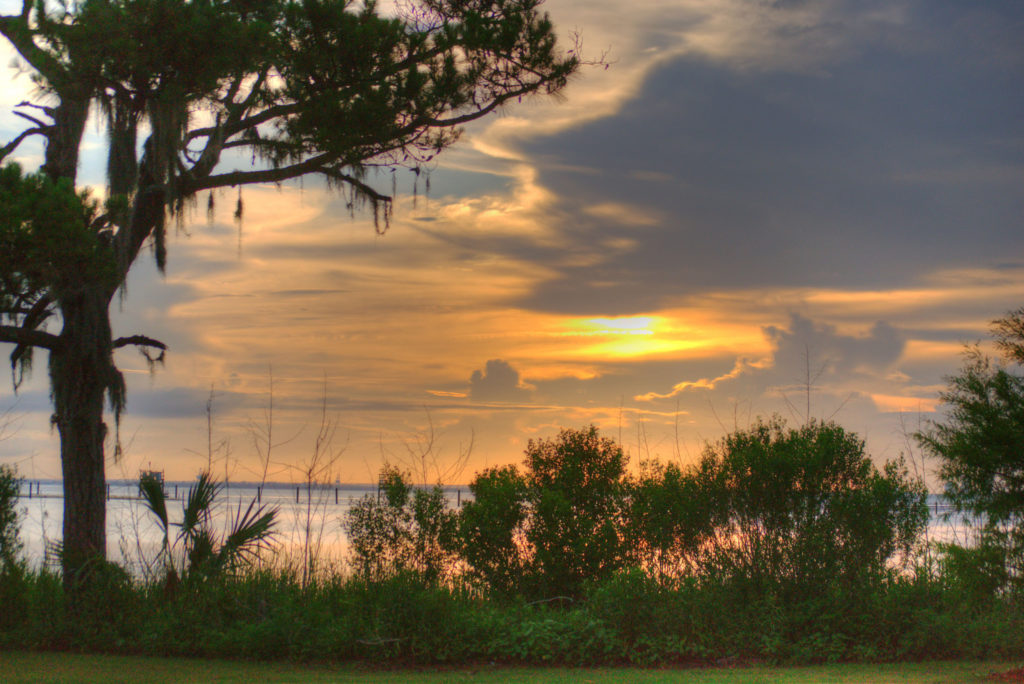
Alabama officials have closed some oystering grounds in Mobile Bay, prompting complaints from harvesters. The move by the Alabama Marine Resource Division is part of a continuing effort to keep wild oyster reefs in the Gulf of Mexico from being killed by overharvesting. The state closed the western half of its oystering area in Mobile Bay on Nov. 23, WKRG-TV reports, and closed two small but productive areas in the eastern half of the bay on Tuesday. Meeting with oyster harvesters on Dauphin Island, AMRD director Scott Bannon said the closure was part of an effort to rebuild the state’s population of the bivalve. “Unfortunately, there’s just not enough oyster harvest available to do a longer season and to maintain that,” Bannon told the television station. “We would love to do that. We’d love to keep Alabama product in the market longer; we would love for them to be working longer and making good money.” Some harvesters say the state is cutting off their main source of income during the peak winter season for Gulf oysters. “They shut us down all the time, and there’s oysters out there, and they won’t let us work them,” said Harry Harris. Much harvesting is done from small boats, and oyster catchers say the water is too choppy for those vessels in the parts of Mobile Bay that are still open. “A lot of small vessels can’t get that limit; they can’t even get out there,” said Michael Williams. “It’s too rough.” Bannon said a new grid system implemented by the state is meant to keep small areas like the ones closed from being overworked. The department opened Alabama’s reefs October 3. It reported late that month that the number of harvesters seeking oysters had risen from last year and that 1,200 sacks of oysters per day were being pulled out of Mobile Bay, up from 800 a day last year. Oyster harvesters are limited to six sacks per day, each holding 85 pounds (39 kilograms). Bannon said those catching the limit can make $500 a day. Other Gulf states have also imposed restrictions. Mississippi allowed no harvest at all in 2021-2022 and has not announced an opening date for this year. That state’s oyster stocks, already in sharp decline, collapsed after the Mississippi Sound was swamped by Mississippi River floodwaters released through the Bonnet Carre Spillway in 2019. Heavy rains also dumped large amounts of freshwater into the Mississippi Sound in 2021, again upsetting the salinity needed for oysters to thrive. The spillway release also led Louisiana to close public oyster harvests east of the Mississippi River from 2019 through 2022. Louisiana reopened those areas in October. Republished with the permission of The Associated Press.
Oyster harvest opens October 3

The Alabama Department of Conservation and Natural Resources (ADCNR) Marine Resources Division (MRD) announced on Thursday that the state will open limited areas of public oyster bottoms for weekday harvest beginning on Monday, October 3, 2022. Oyster harvesting will begin at 7:00 a.m. and close each weekday at 2 p.m. The state will allow weekend harvesting on Saturdays from 7:00 a.m. to 12 noon on October 8, 15, 22, and 29. Oysters, whose population had declined from previous decades, are making a comeback. 50,000 sacks of oysters were harvested in the 2021-2022 season – more than double what it was the previous year. Better management is being credited for this improvement. “Alabama’s wild oyster population is in fair condition and improving. Improvement is a multi-faceted issue,” MRD Director Scott Bannon said. “Some things in nature are rebounding to levels they need to be. They are reaching a balance. Also, some practices have changed in how we address oysters harvest to catch maximum yield but leave enough to impact water quality.” Harvesters can view their locations and the open harvest areas with Alabama’s Oyster Management Station (OMS) Oyster Grid Map. Harvesters are reminded to visit the Oyster Management Stations located across from Jemison’s Bait and Tackle at 16871 Dauphin Island Parkway, Coden, Alabama 36523) or Delta Port Marina at 5080 Green Drive, Coden, Alabama 36523) to drop off their OMS ID cards and confirm which grids are open for harvest prior to the start of their harvesting trip. Heron Bay, Cedar Point East, and Cedar Point West grids will open on Monday, October 3. Grids will close based on evaluations of the harvest by the MRD staff. In order to be a legal recreational oyster harvester, you must report your catch and purchase a recreational harvest tag at the OMS station. Recreational harvesters are allowed to harvest up to 100 legal-size (minimum 3 inches) oysters in the same areas and during the same times as commercial harvest. No license is required, but commercial and recreational oysters may not be transported together on a vessel. All commercial oyster catchers, regardless of age, must have a commercial oyster catcher’s license in order to participate in the harvest. Commercial oyster catchers may harvest up to six sacks per person/vessel per day regardless of how many licensed harvesters are aboard. Recreational oyster catchers may harvest 100 legal-size oysters per person per day. Recreational harvest may only occur in areas and at times that are open for commercial harvest. The approved harvest methods are tong and hand only. The Management Station is located at the Cedar Point Cutoff across from Jemison’s Bait and Tackle and Delta Port Marina. The Management Station will open Monday through Friday from 8:00 a.m. to 3:00 p.m. and on Saturday from 8:00 a.m. to 1:00 p.m. When selected Saturdays are open to harvest, only the OMS at Jemison’s Bait and Tackle will be open. To contact the Management Station by phone: 251-257-9966 For more information about licensing and regulations, please contact the MRD by calling 251 861-2882 or visit the MRD office located at 2 North Iberville Drive on Dauphin Island. To connect with the author of this story, or to comment, email brandonmreporter@gmail.com.
National fisheries administration approves Alabama snapper program
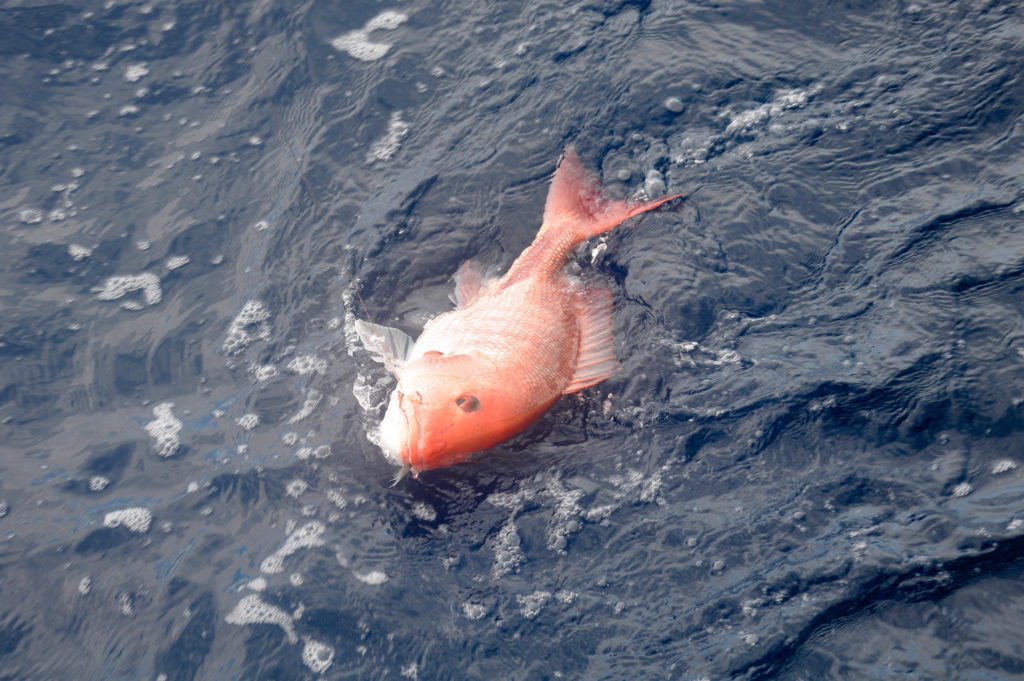
The federal government has approved a system developed by the state of Alabama to count the number of red snapper caught in the Gulf of Mexico. Gulf states, fishing groups and the NOAA Fisheries have disagreed for years about how many snapper can be caught. The decision means Alabama’s numbers can be used in the federal count. The state’s Marine Resources director, Scott Bannon, says anglers are frustrated with short snapper seasons. He says the federal decision is a “huge step” toward managing gulf waters. The state developed the Snapper Check program in 2014. It uses a combination of electronic reporting by anglers and dockside checks to verify the number of snapper that boats are keeping. NOAA Fisheries says it will work with the state to further implement the program. Republished with the permission of the Associated Press.

